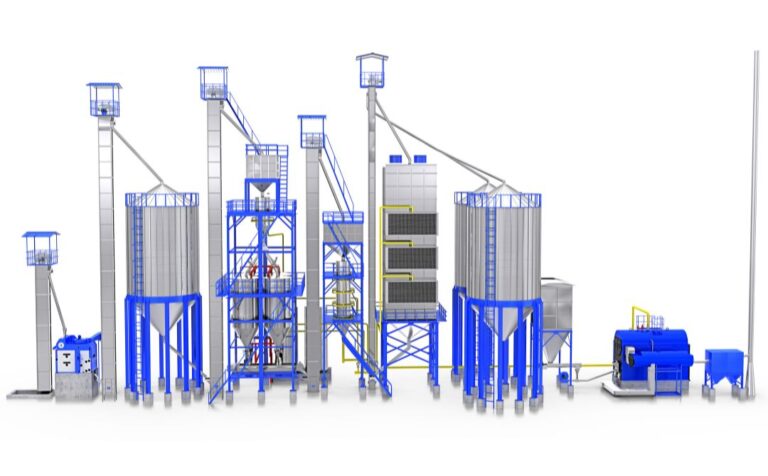Table of Contents
India’s rice industry, a vital engine of the nation’s economy, produces over 120 million tonnes of paddy annually, sustaining millions of livelihoods and feeding a billion people. Among the various processing techniques, the cold water parboiling process stands out for its simplicity and accessibility, particularly for small-scale rice mills in rural areas. This method, rooted in tradition, delivers half-boiled rice with unique qualities that appeal to local markets.
This blog explores the cold water parboiling process, its nutritional benefits, and its role in modern rice production. Whether you’re a rice miller in Assam, a cooperative leader in Maharashtra, or an entrepreneur in Jharkhand, our insights will guide you toward optimizing this time-tested technique for better rice quality and profitability.
The Role of Parboiling in Rice Production
Parboiling is a critical step in rice processing, involving soaking, heating, and drying paddy to gelatinize starch and enhance grain quality. In India, where parboiled rice accounts for 60% of consumption, this process improves nutritional value, texture, and shelf life.
The cold water parboiling process, also known as half-boiled rice parboiling, uses ambient water soaking to achieve partial gelatinization, making it cost-effective for small mills. Inefficient parboiling can lead to 3–5% grain losses (150–250 kilograms per 5 tonnes, worth ₹7,500–₹12,500 at ₹50 per kilogram), but SKF Elixer’s plants reduce losses to below 2%, boosting head rice recovery to 94–96%.
Our parboiling plants, compliant with Food Safety and Standards Authority of India (FSSAI) standards, ensure rice millers produce high-quality half-boiled rice with minimal investment.
What Is Cold Water Parboiling and How It Works?
Cold water parboiling involves soaking paddy in water at ambient temperatures (25–30°C) for 24–48 hours, followed by steaming or drying to achieve partial starch gelatinization. Unlike hot water parboiling, which uses 70–85°C water for faster processing, cold water parboiling is slower but requires minimal energy and equipment, making it ideal for small-scale mills in rural India.
The process results in half-boiled rice, which retains 70–80% of nutrients from the bran, offering a slightly chewy texture and enhanced shelf life.
SKF Elixer’s cold water parboiling plants automate soaking and drying, reducing labor by 50% and processing time by 20%, saving ₹10,000–₹15,000 per 10-tonne batch while maintaining quality.
Step-by-Step Cold Water Soaking Process
The cold water parboiling process is straightforward but requires precision:
1. Pre-Cleaning
Paddy is cleaned using vibrating sieves to remove impurities (1–2 kilograms per tonne), such as dust and stones, ensuring hygiene and preventing contamination. For a 10-tonne batch, this saves ₹5,000–₹10,000 in grain losses.
2.Cold Water Soaking Process in Rice Mills
Paddy is soaked in ambient water (25–30°C) with a paddy-to-water ratio of 1:2 for 24–48 hours, achieving 30–35% moisture content. This promotes partial gelatinization (50–60%), retaining 70–80% of nutrients like thiamine. Stainless steel tanks ensure hygiene, reducing bacterial growth and saving ₹5,000–₹10,000 per batch in rejected grain.
3. Draining and Tempering
Excess water is drained, and paddy is tempered at 25–30°C for 2–4 hours to distribute moisture evenly, preventing cracking. This ensures 94–96% head rice recovery, adding ₹15,000–₹25,000 per 10 tonnes in value.
4. Steaming (Optional)
Some mills apply low-pressure steam (0.5–1 kg/cm²) for 10–15 minutes to enhance gelatinization, though many rely solely on soaking for half-boiled rice. These plants offer optional steaming modules, costing ₹500–₹1,000 per tonne in energy.
5. Drying
Paddy is dried to 12–14% moisture using hot air (40–50°C) or sun-drying over 8–12 hours for a 5-tonne batch. Automated drying in plants saves ₹15,000–₹20,000 per batch compared to sun-drying’s 3–5% losses.
6. Milling
Dried paddy is milled to produce half-boiled rice, with minimal breakage, increasing market value by ₹3–5 per kilogram.
Nutritional Impact of Cold Water Parboiled Rice
Cold water parboiled rice retains significant nutrients:
- Vitamins and Minerals: Preserves 70–80% of thiamine (0.3–0.5 mg/100g), iron (1.5–2.5 mg/100g), and magnesium (15–25 mg/100g), supporting energy metabolism and reducing deficiency risks, saving ₹2,000–₹5,000 annually in healthcare for a family consuming 10 kilograms monthly.
- Protein Content: Offers 7–8 grams per 100 grams, aiding muscle growth and immunity.
- Glycemic Index: Lower GI (45–55) than raw rice (70–89), supporting diabetes management and saving ₹3,000–₹5,000 annually in medical costs.
- Fiber: Contains 1–1.5 grams per 100 grams, promoting digestive health.
Compared to raw rice, cold water parboiled rice retains 20–30% more nutrients, enhancing its nutritional value.
Cold Water Parboiling Advantages and Challenges
Advantages:
- Cost-Effective: Requires minimal equipment (no high-pressure boilers), saving ₹5–10 lakh in setup costs compared to hot water systems.
- Nutritional Retention: Retains 70–80% of vitamins, adding ₹3–5 per kilogram in market value.
- Accessibility: Ideal for small mills in rural areas like Assam, with low energy costs (₹500–₹1,000 per tonne).
- Shelf Life: Extends storage by 6–12 months, saving ₹10,000–₹20,000 per 10 tonnes in losses.
Challenges:
- Longer Processing Time: 24–48 hours of soaking increases cycle time, reducing throughput by 30–40% compared to hot water methods.
- Nutrient Leaching: Prolonged soaking risks 20–30% nutrient loss, lowering quality.
- Water Usage: Uses 2–3 times more water, generating wastewater that costs ₹5,000–₹10,000 per batch to manage.
The plants mitigate these challenges with automated soaking and water recirculation, reducing water use by 20% and time by 20%.
Cold Water Parboiling in Modern Rice Mills
Modern rice mills are adopting cold water parboiling for its affordability, especially in rural areas which can be enhanced with:
- Stainless Steel Tanks: Prevent contamination, ensuring FSSAI compliance and saving ₹5,000–₹10,000 per batch.
- IoT Monitoring: Optimize soaking duration, reducing time by 20% and saving ₹10,000–₹15,000 per 10-tonne batch.
- Water Recirculation: Cuts water usage by 20%, saving ₹5,000–₹10,000 per batch.
These advancements make cold water parboiling viable for modern mills, boosting output by 30%. Moreover, subsidies under PM Kisan Sampada Yojana could offset 20–30% of costs.
Why Choose SKF Elixer?
With years of expertise, SKF Elixer delivers BIS-certified parboiling plants tailored for India’s rice varieties. Our options, support, and AMCs starting at ₹50,000 per year ensure reliability for rice millers.
Conclusion
The cold water parboiling process offers a cost-effective, nutrient-rich solution for producing parboiled rice. SKF Elixer’s advanced plants enhance this traditional method, delivering quality and efficiency for India’s rice industry.
Choose our solutions to meet growing demand for premium rice.
Ready to optimize your parboiling process? Contact SKF Elixer to explore our cold water paddy parboiling plants.
FAQs
-
1. What is cold water parboiling, and how does it work?
Cold water parboiling soaks paddy at 25–30°C for 24–48 hours, followed by tempering and drying, achieving 94–96% head rice recovery and retaining 70–80% nutrients, saving ₹15,000–₹25,000 per 10 tonnes.
-
2. What is the step-by-step cold water soaking process?
It includes pre-cleaning (1–2 kg impurities per tonne), soaking (24–48 hours), tempering (2–4 hours), drying (8–12 hours), and milling, saving ₹15,000–₹20,000 per 5-tonne batch in losses.
-
3. What are the nutritional benefits of cold water parboiled rice?
It retains 70–80% of thiamine (0.3–0.5 mg/100g), iron (1.5–2.5 mg), and magnesium (15–25 mg), with a lower GI (45–55), reducing healthcare costs by ₹2,000–₹5,000 annually for a family consuming 10 kg monthly.
-
4. What are the challenges and limitations of cold water parboiling?
It takes 24–48 hours, risks 20–30% nutrient leaching, and uses more water, costing ₹5,000–₹10,000 per batch. Plants reduce time by 20% and water use by 20%, mitigating these issues.
-
5. How is cold water parboiling adopted in modern rice mills?
Plants with IoT controls and stainless steel tanks cut soaking time by 20%, save ₹50,000–₹1 lakh annually in labor, and ensure FSSAI-compliant half-boiled rice for mills in Assam.
Good reads are meant to be shared









